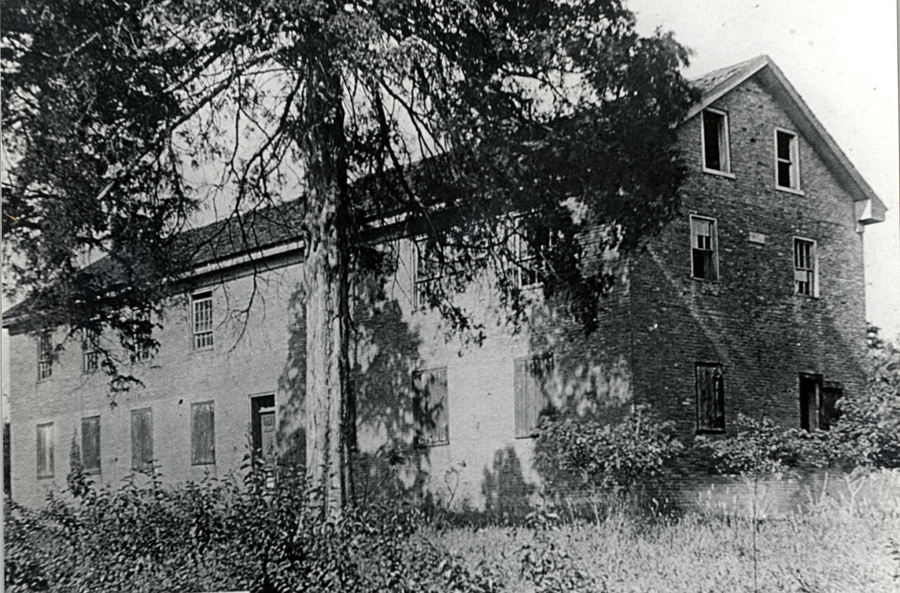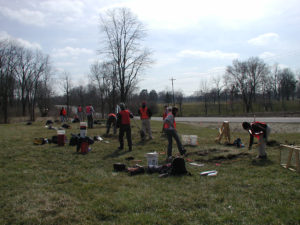(by Andy Sewell, originally posted February 10, 2012)
In 2005, Hardlines Design Company (HDC) was tasked by the Ohio Department of Transportation (ODOT) to conduct a Phase III archaeological data recovery at the historic Shaker community of Union Village as part of the realignment of State Route 741 in Warren County, Ohio. The part of Union Village that we examined was the North Family Lot, which included a communal house and numerous shops and outbuildings, and was occupied by the Shakers from 1815 until 1906. No buildings survive at the site.
One enigmatic building was the Pottery/Broom shop, shown below in the only known historical photograph. Before our study, little was known about this building, but our historical research revealed that it went through several phases of renovations. The building began as a one-story brick smith shop in 1826, and in 1836, an addition was built to convert the building into a pottery; then in 1852, a second story was added to convert the shop into a space for making brooms.

The Pottery/Broom Shop at the North Family Lot, ca. 1915
Archaeological investigations revealed two styles of foundation. One foundation was built solely of brick, and a second one butted up against the brick foundation but was made of limestone, raising the question: Which foundation is the original smith shop, and which is the 1836 pottery addition? One hypothesis was that the original foundation was the limestone one, as the communal house and other early shops have similar foundations. Bill Faciane, an architectural engineer with HDC, visited the excavations and determined that the two foundations showed differences in the mortar–lime was present in the limestone foundation, but the brick foundation had only sand–indicating that the foundations were built at different times. Bill noted too that a southern interior foundation was brick, while a similar foundation to the north was limestone. Excavation of the trenches for the foundations also revealed a key difference: The trenches on the brick foundation had relatively few artifacts, while the trenches on the limestone foundation were filled with cast-off pot sherds from the pottery.

Through the coalition of these three lines of inquiry and expertise, HDC was able to disprove the original hypothesis and instead conclude that it was the brick foundation that was the original smith shop, and the limestone foundation was the addition built when the pottery was active at the site. Further examples of how the synthesis of historical, architectural, and archaeological studies contributed to the understanding of the North Family Lot can be found in the four-volume report on the project, available as free PDFs at this link:
Encountering the Shakers of the North Family Lot, Union Village, Ohio

